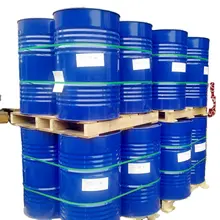Introduction
Road safety is a paramount concern in our increasingly mobile world. As traffic volume and driving speeds rise, the need for effective safety measures becomes more urgent. One innovative solution that is making a significant impact is reflective road paint. This article delves into the importance of road safety, the composition and functionality of reflective road paint, and its benefits over traditional road markings. We will also explore its role in enhancing visibility, reducing accidents, and supporting autonomous vehicles. Furthermore, we will look at case studies of its implementation, the challenges faced, and the promising future prospects of this technology.
The Importance of Road Safety
Road safety is crucial as car accidents, often caused by small avoidable discrepancies, are alarmingly common. Multitasking while driving often leads to fatal crashes. The potential for death or serious injury is always a risk when someone is not focused while driving. Even if you are a safe driver, others might not be, hence the need for constant vigilance on the road.
Understanding Reflective Road Paint
Reflective road paint is a safety mark and a 'language' in road traffic. It's a coating applied to roads to mark traffic lines, playing a crucial role in transportation facilities. The paint is available in different colors like white and yellow, used for marking line striped parking lots, road-street traffic lines, etc. The clear and complete road markings can effectively reduce accidents and improve driving efficiency. It's also worth noting that the traffic volume on the road is increasing, and so is the driving speed, leading to higher requirements for traffic safety facilities.
Components and Functionality
Reflective road paint, also known as road marking paint, is a crucial component in road safety. It is primarily composed of thermoplastic resin, titanium-dioxide pigment, and tiny reflective glass beads. The thermoplastic resin and pigment form the base of the paint, providing its color and durability. The reflective glass beads, however, play a significant role in enhancing the paint's visibility. When added to the road marking paint, these beads make the marking lines reflective, thereby improving road safety, especially during low-light conditions. This paint can be efficiently applied using a professional road marking machine.
Benefits Over Traditional Road Markings
Reflective road paint offers numerous benefits over traditional road markings. It employs special additives like glass beads or micro prisms that reflect light back to its source, enhancing visibility. This paint significantly improves safety during low-light conditions and adverse weather, maintaining its reflective properties. It also offers long-lasting performance due to excellent adhesion to the road surface, reducing the frequency and costs associated with repainting. Furthermore, many reflective paints are water-based and have low levels of volatile organic compounds (VOCs), contributing to environmental sustainability.
The Role of Reflective Road Paint in Road Safety
Reflective road paint, akin to reflective pavement markers, plays a crucial role in road safety. It enhances driver visibility, particularly in low-light conditions, by reflecting vehicle headlights back towards the driver. This retroreflection makes nighttime navigation easier and can reduce nighttime crashes by up to 30%. Reflective road paint is used for marking lanes, centerlines, and edge lines, providing clear guidance on the road layout and helping to prevent accidents.
Enhancing Visibility
Nighttime driving can be challenging due to impaired visibility. Proper headlight maintenance and additional accessories like fog lights can enhance visibility significantly. It's crucial to ensure your headlights are functioning optimally and are set at the right angle. If you notice them starting to dim or fade, it's time for a professional inspection. Additionally, installing fog lights can be beneficial, especially in areas prone to heavy fog. These measures can help illuminate the road better, making driving at night safer.
Reducing Accidents
Road markings play a crucial role in reducing accidents by providing visual guidance to drivers. Studies have shown that drivers adjust their speed and lateral position better with clear road markings, particularly under adverse weather conditions. Additionally, road markings can help reduce excessive speeding by creating an illusion of vehicle acceleration. The introduction of reflective road paint can further enhance these safety benefits by improving visibility, especially in low-light conditions, thus contributing significantly to accident reduction.
Supporting Autonomous Vehicles
Reflective road paint plays a crucial role in supporting autonomous vehicles. It serves as a reading element for cameras and Lidar, ensuring safe and well-guided travel in automated and connected vehicles. Autonomous vehicles rely on road markings to determine their position. High-quality road marking systems provide markings that reach high retroreflection values, enhancing visibility for autonomous driving systems. The development of such technology is part of the global efforts towards a new era of mobility, where autonomous driving is safe and accessible to all.
Case Studies of Reflective Road Paint Implementation
Los Angeles has been combating urban heat by painting roads with a reflective coating since 2017. This initiative, known as 'cool pavement', has been implemented on hundreds of miles of roads. The reflective paint bounces the sun's energy back into space, reducing the heat absorbed by the asphalt. The city plans to expand this program, allocating $4 million to make more streets cool in the coming year. Other cities like Phoenix and San Antonio are also adopting this strategy, and there's growing interest globally, with cities like Las Vegas, Miami, Orlando, and even Athens considering it.
Challenges and Solutions in Implementing Reflective Road Paint
Implementing reflective road paint comes with challenges. Discoloration can occur due to high melting temperatures or substandard product quality. Night reflectivity can be ineffective due to poor scattering of glass beads or subpar coating liquid. Cracking can result from cold-shrink during winter construction, subgrade reflection, or road softening in high temperatures. Skin peeling off can be caused by inadequate bonding strength, unclean road sweepers, or inappropriate paint choice for cement roads. However, these issues can be mitigated by controlling temperature, using quality products, selecting appropriate construction seasons, and ensuring thorough road cleaning.
Future Prospects of Reflective Road Paint
The future prospects of reflective road paint are promising, driven by increasing investments in infrastructure and smart road technology. Innovations such as organic-inorganic hybrid polymer latex for high durability and reactive line markings that charge using solar light are propelling the market growth. The Asia Pacific region, with its rapid development and construction activities, is anticipated to lead the global market. Furthermore, North America and Europe are expected to witness steady growth due to increased road safety practices and the need for better-marked roads.
Conclusion
Reflective road paint is revolutionizing road safety, offering a simple yet effective solution to enhance visibility and reduce accidents. Its role extends beyond just marking lanes, as it also supports the advancement of autonomous vehicles and contributes to environmental sustainability. Despite the challenges in its implementation, the future of reflective road paint is promising, with continuous innovations and increasing global adoption. As we move towards a world of smart road technology and autonomous driving, the importance of such safety measures will only continue to grow. Reflective road paint is not just a coating on the road; it's a crucial tool in our quest for safer roads and a safer world.










































 浙公网安备 33010002000092号
浙公网安备 33010002000092号 浙B2-20120091-4
浙B2-20120091-4